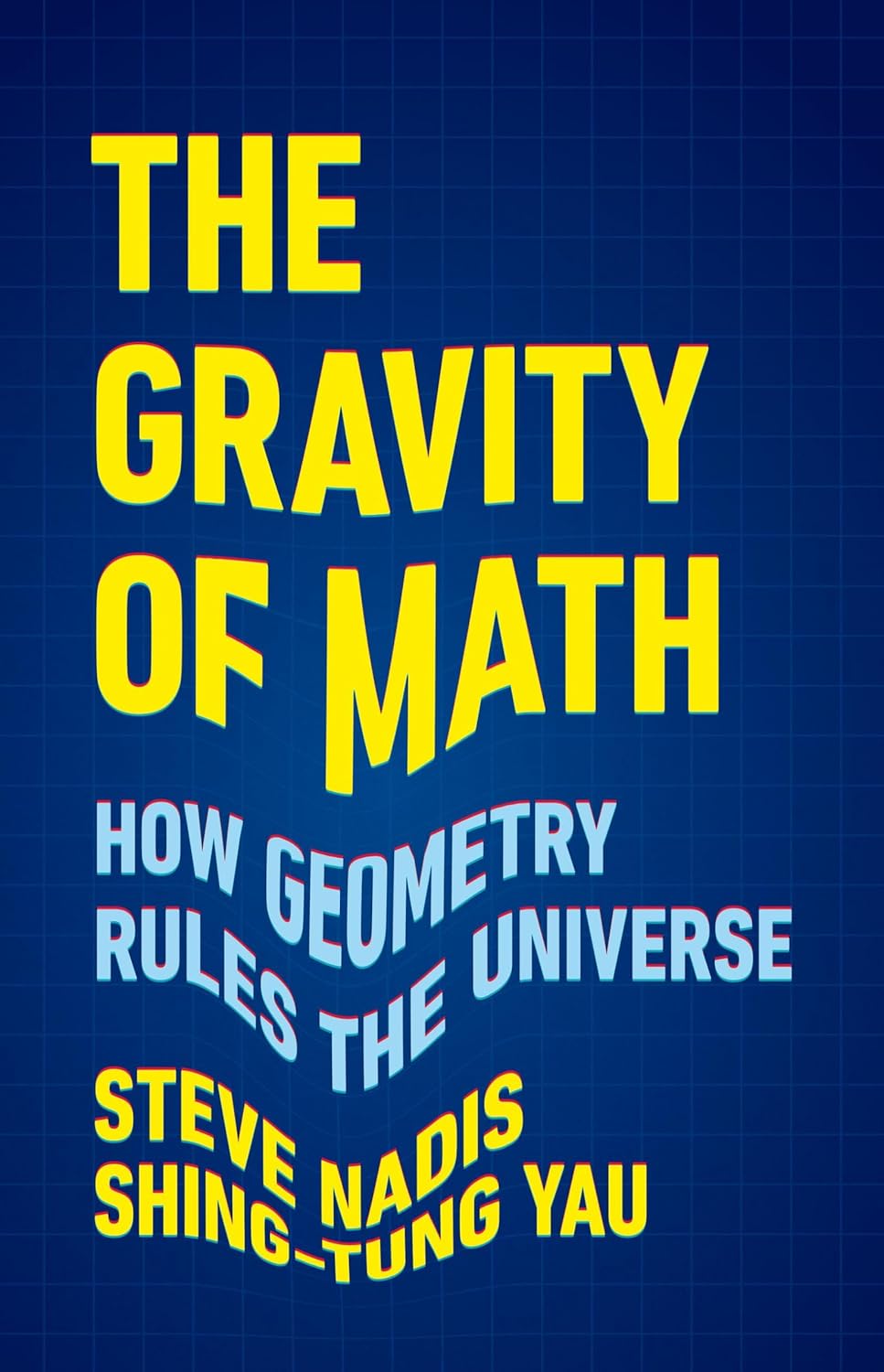
- Author: Steve Nadis and Shing-Tung Yau
- Publisher: Basic Books
- Publication Date: 04/16/2024
- Number of Pages: 272
- Format: Paperback
- Price: $32.00
- ISBN: 9781541604292
- Category: gen
[Reviewed by Bill Satzer, on 11/13/2024]
This book explores the many ways that concepts, techniques and tools of geometrical reasoning have contributed to the physics of gravitational theory. On many occasions the tools were developed well before their application to physics, and perhaps sometimes prefigured theories of physics. Examples range from Apollonius’ work on conic sections and its application centuries later to Kepler’s laws, to Riemannian geometry and the concept of Minkowski space applied in Einstein’s theories of relativity.
One of the authors – Yau – developed his interest in gravitational theory as a graduate student taking a class in general relativity while he pursued geometry from the mathematics side. His interest has continued through the years, and he has made several significant contributions of his own. A consistent theme of the book is the dynamic interplay between mathematicians and physicists, as they approach the questions of gravitational theory using their own ideas and approaches but often playing their ideas off one another.
This is not a mathematics book, though it contains the occasional formula. It is instead about mathematics and its relationship to physics, especially the questions raised in the continuing development of general relativity. Much of what it aims to do is to explore the aspects of mathematics that underlie the theory of general relativity and describe the tools that have enabled others to offer further developments.
After describing the theory of general relativity and its background, the authors explore some of its consequences in succeeding chapters – including the question of singularities such as the one that Schwarzschild investigated, the existence of black holes, gravitational waves, the expansion of the universe, and many questions that arise from that. A final chapter takes up the grand unification question: how to develop a theory that incorporates gravity with electromagnetism and the strong and weak nuclear forces. A unified theory involving the latter three exists, but gravity has been much harder to incorporate.
The book is accessible to a general reader, but the discussion would likely mean more to readers with some background in physics and at least basic acquaintance with mathematical and geometrical concepts such as curvature.
It is worth noting that mathematical theories can be valid provided they are logically consistent even though they might have no application to the physical world. Physics, on the other hand, depends on validation by experiment in the real world and so depends on verification by testable predictions. This continues to be an issue with string theory that is considered in the last part of the book. String theory has given rise to a lot of very interesting mathematics, but its relevance to the physical world remains to be demonstrated.
Bill Satzer (bsatzer@gmail.com), now retired from 3M Company, spent most of his career as a mathematician working in industry on a variety of applications. He did his PhD work in dynamical systems and celestial mechanics.
